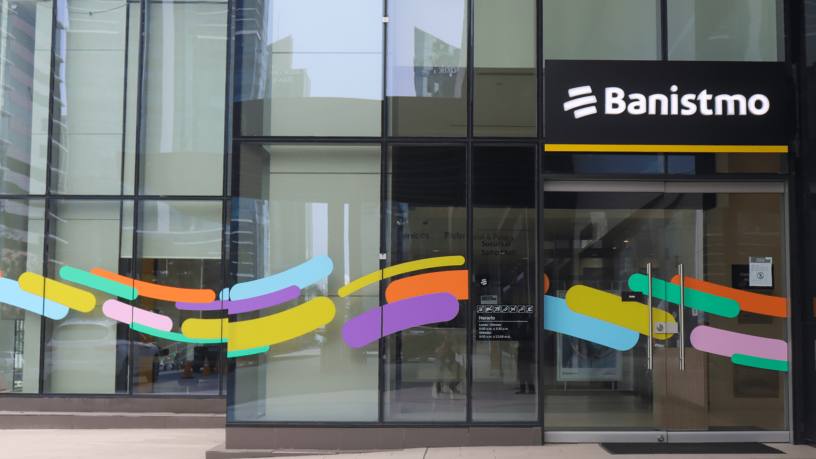In 1988, the US invasion of Panama resulted in the closure of the latter’s banking system for nine and a half weeks. “We grew up stronger,” recalls Javier Carrizo Esquivel, CEO of state-owned Banco Nacional de Panamá (BNP).
The sustained growth of the Panamanian economy over the following 30 years has made the country a reference point for the region. “This economic maturity has produced a number of opportunities in the financial sector,” says Ignacio Vollmer, executive chairman of Mercantil Holding Financiero Internacional, Mercantil Banco and Capital Bank.
Nowadays, the Panamanian banking system is large compared to the size of the country, which has a population of around four million. Of the 66 banks operating in Panama, 42 have a licence to operate locally, with many being foreign-owned.
“The evolution of the Panamanian banking sector has significantly encouraged investment in the country by regional and local business groups. This has led to [several mergers and acquisitions] as a natural consequence of the dynamism of this financial sector. More consolidation is expected to come,” says Mr Vollmer.
A wave of consolidation has indeed long been expected in the country and there have already been deals in the space. From 2008 to May 2020, the total number of banks, including representative offices, dropped from 90 to 69, according to a report by the Inter-American Development Bank (IDB).
Last December, Banco Mercantil Panamá formalised the acquisition of national peer Capital Bank. In 2019, Banco Aliado acquired Banco Panamá. Multibank Financial has been owned by Colombia’s largest financial conglomerate Grupo Aval since 2019. Back in 2013, Bancolombia, Colombia’s largest lender by assets, purchased HSBC Bank Panama for $2.1bn and renamed it Banistmo.
Current market conditions, a tougher regulatory environment and the need to increase investment in technology might further encourage this consolidation trend.
“We anticipate that consolidation will continue throughout 2023. There are too many banks when you take into account the capital requirements set by the Basel framework and the local superintendency. Many banks in Panama are boutiques that cater to specific communities or focus on niche segments. They make very small margins,” says Carlos Araúz García, founder of Fidinem Financial Advisory Services.
“Unfortunately, instead of being a large international banking sector, we have become more of a regional banking sector where concentration is a concern.”
According to The Banker Database data, 50.62% of total assets (excluding state-owned banks) at the end of 2021 were managed by three banking conglomerates: the local Banco General, Banco BAC and Grupo Bancolombia, which controls Banistmo and Bancolombia Panama.
However, many banks do not see such concentration as a risk. “The largest banks do not pose systemic risk, as they are part of larger groups, well run and well regulated,” says Aimeé Sentmat, CEO of Banistmo.
“We compete in different areas. Along with Caja de Ahorros, we operate in the lower income mortgage housing market, which is not served by the other banks. It is a segment very sensitive to interest rate increases. We have a role to serve as a state-owned bank,” explains Mr Carrizo of BNP, the country’s third-largest bank by assets.
Regional banking hub
The main challenge facing the banking system is Panama’s inclusion on the Financial Action Task Force of Latin America’s (Gafilat’s) grey list, which deters external investments, according to Victor Viggiano, executive president of Bi Bank, a new privately-owned lender.
The country has been on the list, which includes jurisdictions that are non-compliant or have weak anti-money laundering and countering the financing of terrorism (AML/CFT) standards, since 2019.
Panama has taken important steps towards improving its AML/CFT regime, according to Gafilat. However, the country is still required to demonstrate adequate verification and compilation of information regarding ultimate beneficial ownership and demonstrate its ability to investigate and prosecute money laundering.
“The main reason why Panama is on this list derives from the implementation of measures and new laws regulating non-financial sectors — mainly law firms which have to comply with full due-diligence of companies’ incorporations. However, this should be resolved by mid-2023,” Mr Viggiano adds.
The Financial Action Task Force, to which Gafilat is associated, has asked Panama to complete its action plan by February 2023.
Being grey-listed could potentially affect correspondent banking relationships and vital overseas credit channels, threatening financial stability, according to a 2022 International Monetary Fund (IMF) report.
Not a single bank in Panama has a department that creates or sells paper corporations
“In the country there are some banks that have one correspondent relationship, and if they lose that, they are basically isolated from the rest of the world,” says Felipe Echandi, digital economy entrepreneur and member of the board of directors at the Superintendency of Banks of Panama. “Leaving the grey list is a must to be able to compete on equal terms with other financial centres.”
The negative perception created by the ‘Panama Papers’ — a massive dump of 11.5 million leaked documents from a Panamanian law firm revealing personal financial information of wealthy individuals and public officials in 2016 — remains despite all that Panama has done, Mr Carrizo notes. “Not a single bank in Panama has a department that creates or sells paper corporations,” he says.
Technology challenges
The Panamanian banking system has also been very conservative in terms of regulation and internal policies, due to the absence of a lender of last resort. However, the rapid advancement in technology is now a mounting challenge, according to some observers.
In the case of the fintech industry, Panama is behind its regional peers, according to a 2021 report by the IDB. The relative development of the fintech ecosystem in Panama City is barely a quarter of Mexico City’s, remarks the institution.
“Countries such as Colombia, Chile and Mexico have been faster in terms of technology adoption or with regards to the overall impact of the fintech sector,” says Fidinem’s Mr Araúz. “In Panama, we have fallen behind in competitiveness when it comes to technology.”
Recently, Panama’s financial system has lost competitiveness, according to the IDB report. Since 2012, the weight of its assets within its gross domestic product has been reduced by 84 points.
The modernisation of the country’s financial system should focus on: reducing regulatory costs; the development of a capital market as a regional hub; the use of technology to achieve efficiency; and greater inclusion among different socioeconomic groups, according to the IDB.
“In Panama, 90% of the financial sector is traditional banking,” says Mr Echandi. “Our securities market is smaller and less liquid than in other financial centres. There is not a lot of alternative companies providing financial services that are not banks. This could definitely be improved as the companies that are growing the fastest in the sector are not traditional banks.”
For that to happen in Panama, there are several key reforms that need to be implemented. “We need a clear public policy around payments, infrastructure and interoperability, which are extremely important for competition. There is just no level playing field and no clarity,” Mr Echandi adds.
Panama does not have a central bank, which has meant no clear long-term thinking in public policy around these issues.
“In 2008, the banking law was reformed to prohibit taking funds from the public without an enabling licence,” Mr Echandi continues. “This is normally fine if there is sufficient flexibility around the licences that exist. But in Panama, there were no licences that were compatible with most of the new innovative business models. Some people have experimented with some of these business models, but there is no solid legal backing for these businesses to operate.”
The 2008 law followed the discovery of a financial pyramid scheme organised by Colombian fraudster David Murcia Guzmán, which resulted in huge losses for investors at the time.
“It is good to have a banking system that can serve the rest of the world. But the internet is giving us the opportunity to serve our own population, hopefully reaching 100% banking inclusion, as well as becoming a regional financial services platform compatible with new business models. This is the only way our financial centre can remain relevant,” says Mr Echandi.
Mr Carrizo agrees that more can be done, saying: “BNP has proposed a new law regarding the payment systems which is very necessary to create a level playing field for everyone. We reached out to KPMG Colombia, which was instrumental in creating the payment systems regulation for the central bank of Colombia. We used that as a framework to work on our own law. So, we expect to have a law this year.”
And there has been progress in terms of technological adoption due to the Covid-19 pandemic. Mr Carrizo explains: “We advanced a lot faster than expected, especially with retirees. We issued more than 120,000 new accounts with debit cards — believe it or not, retirees were still receiving cheques.
“We have reduced the demand for new branches because after the pandemic, Panamanians in general are more digitised. People are finally learning to use ATMs and digital [platforms].”
Technological solutions could help cover the financial inclusion gap. In Panama, more than 50% of the population above the age of 15 do not have access to a bank account.
“There is an imminent opportunity to increase the level of financial inclusion, reduce the level of informality and increase the use of cash, while providing more transparency to the flows of the different funds within the economy,” says Banistmo’s Ms Sentmat.
Rising interest rates
The Panamanian banking system has been relatively successful, relative to the rest of the region. Depositors from abroad, mainly regional ones, see Panama as a solid banking centre underpinned by stable institutions. As of last November, external deposits in the system grew by 5.4% on a yearly basis, according to data from the national Superintendency of Banks.
Total credit growth accelerated to 11.3% for the 10 months ending October 2022, following 3.6% growth in 2021, driven mainly by foreign client growth of 26.9%, according to Fitch Ratings.
However, 2023 is going to be a very challenging year. “In such a high interest rate environment, we are going to have to compete with other destinations, especially the US, to attract foreign capital. But we have fewer barriers to entry, so we are a friendly destination for the region,” says Mr Carrizo.
The consumer loans sector is now better than before, but there are still margins for improvement
Mr Viggiano agrees: “A steep increase in US dollar rates, high inflation and unemployment, will add pressure on economic growth, corporate performance and individual customers’ ability to service debt. Non-performing loans will continue to be on the higher end of historic levels in Panama, and liquidity will be tighter. Therefore, we foresee limited growth in the sector.”
Interest rate increases might affect banks’ margins as it will be difficult to totally transfer those to the borrowers without losing competitiveness. Margins are expected to be narrower to keep the level of credit demand steady.
The increment in interest rate will especially pose a risk in terms of profitability for small banks.
The need to monitor the performance of the credit portfolio in both the consumer and corporate segments will also be relevant. “Panama had probably the longest moratorium in the world, at 18 months. In July 2020, the financial system had 50% of the total portfolio — or $26bn — under those moratoriums,” says Ms Sentmat. “Now clients will need to comply with the new agreements or former agreements that have already been in place since the moratorium is over.”
Today, the delinquency rate is a little higher than before the pandemic, according to Paul Caro, director of analysis at Pacific Credit Rating. “The consumer loans sector had more problems during the pandemic year. It is now better than before, but there are still margins for improvement,” he says. As of last November, the delinquency ratio for loans with arrears of more than 90 days was just 2.3%, according to data from the Superintendency of Banks.
“Liquidity reduced in 2022 because loans increased. Also, the net interest rate spread is now reduced compared to 2018,” adds Mr Caro.
Overall, Panama’s banking system remains stable, well capitalised and liquid, according to the IMF.
General elections are scheduled to be held in Panama in May 2024. “In general terms and up till now, Panama’s banking system has held wide respect from all sides of the political spectrum. It has therefore not been a target by populist campaigns, as happened in some countries,” says Mr Echandi.













